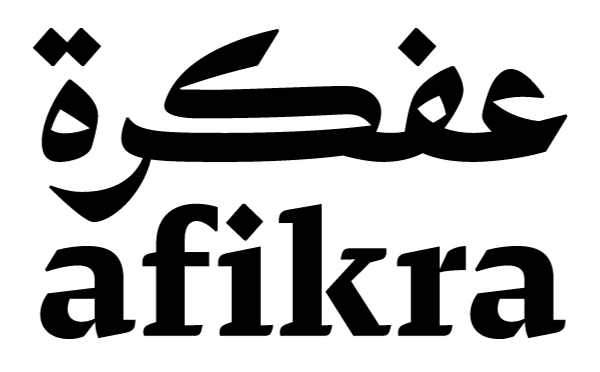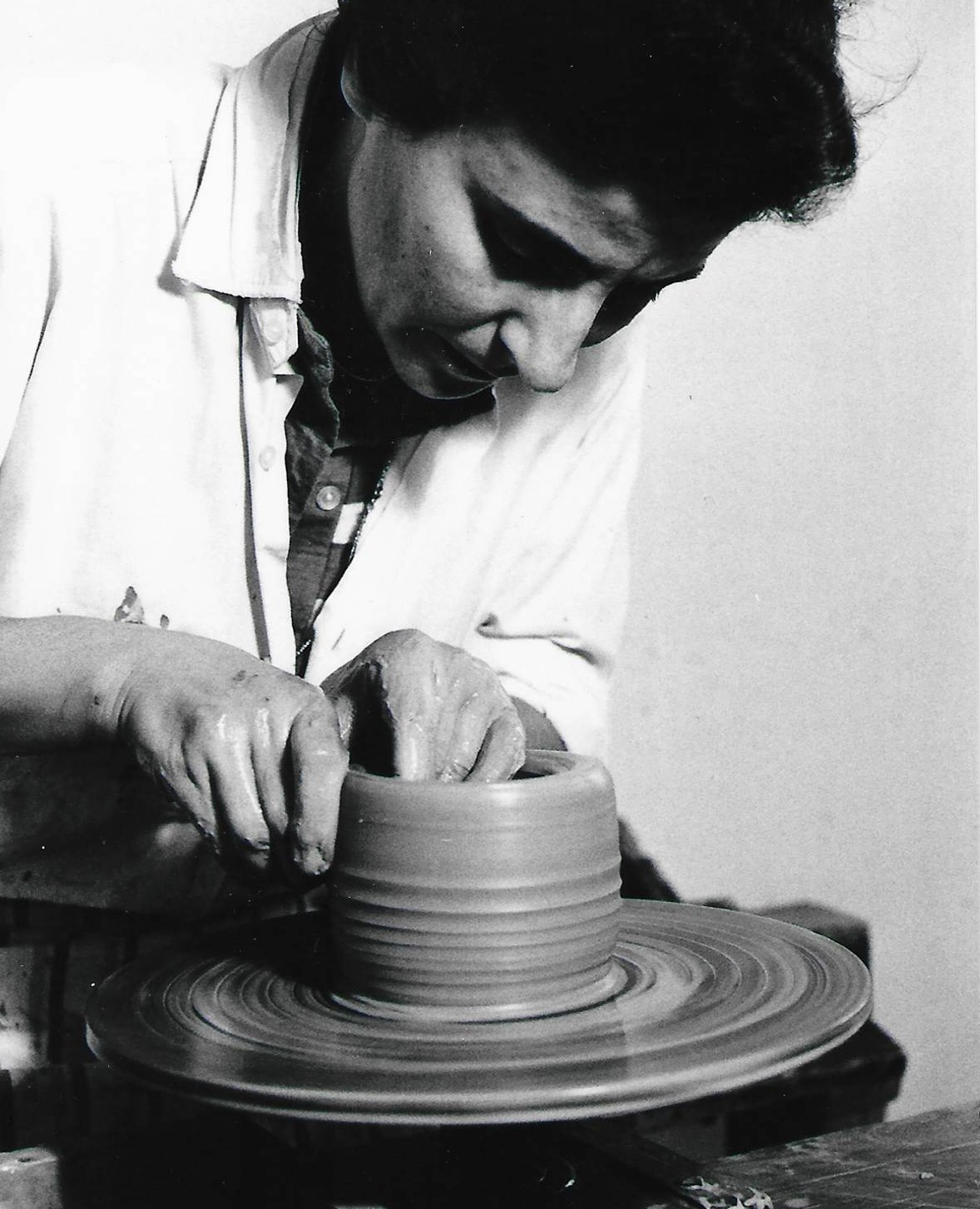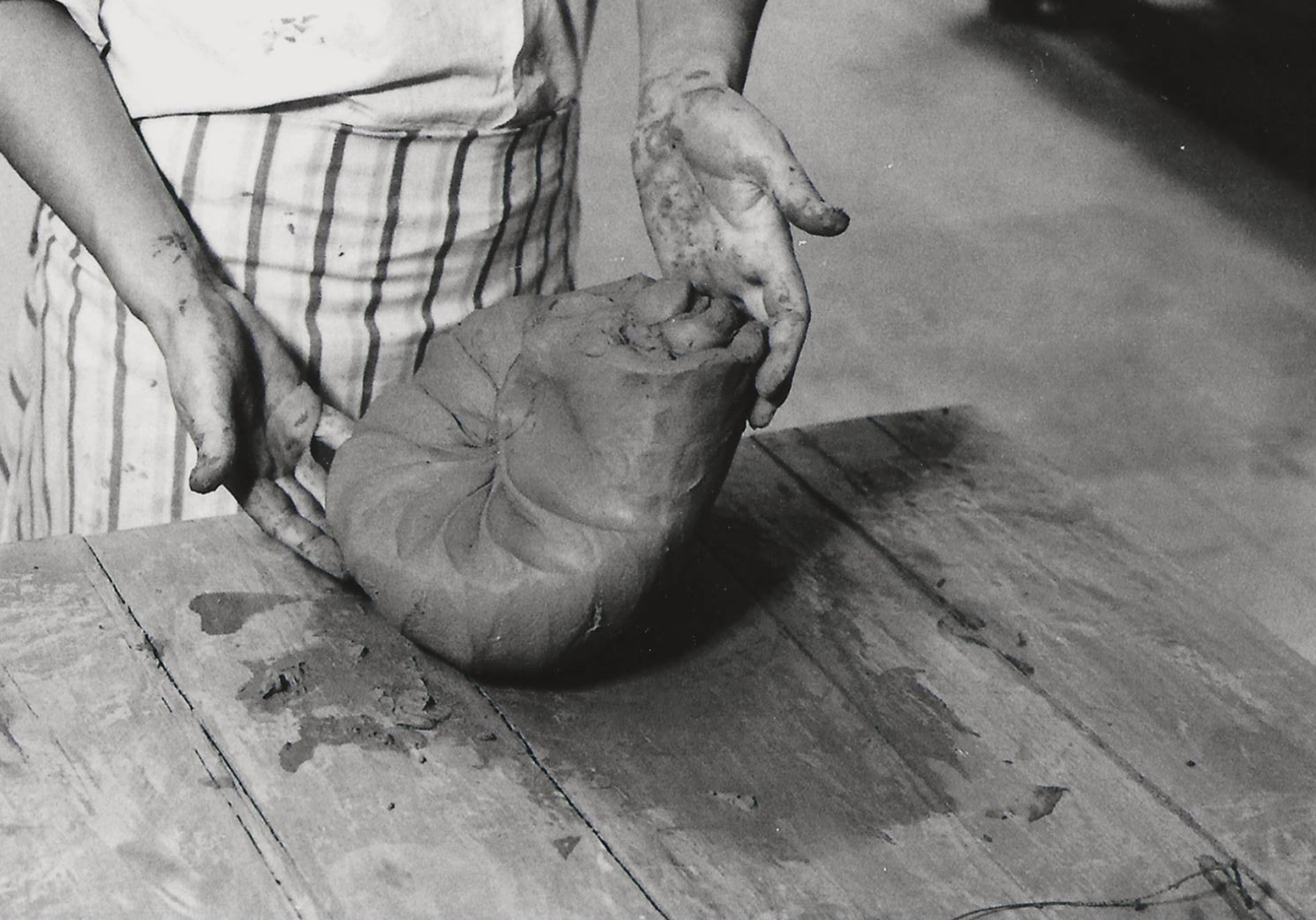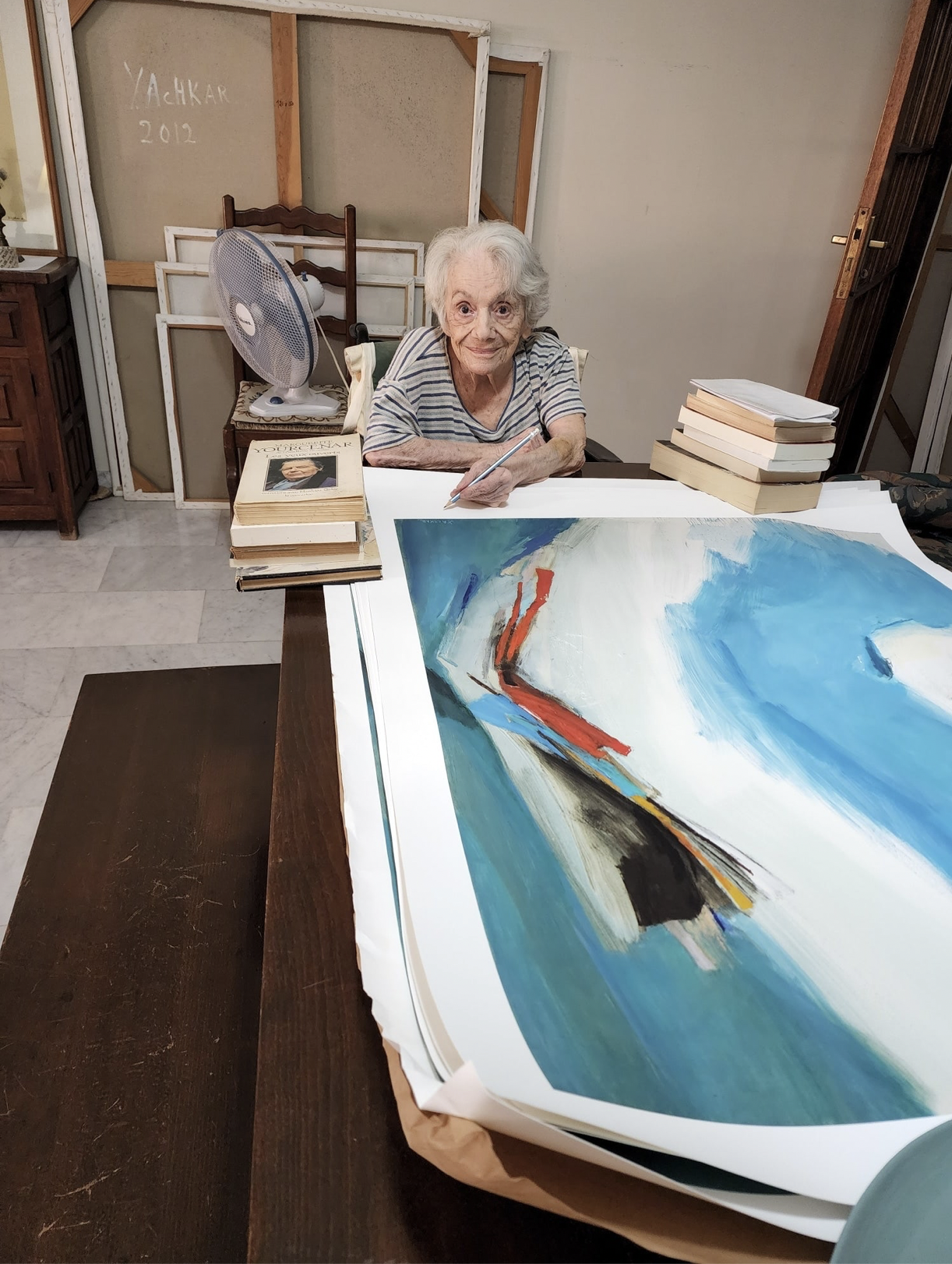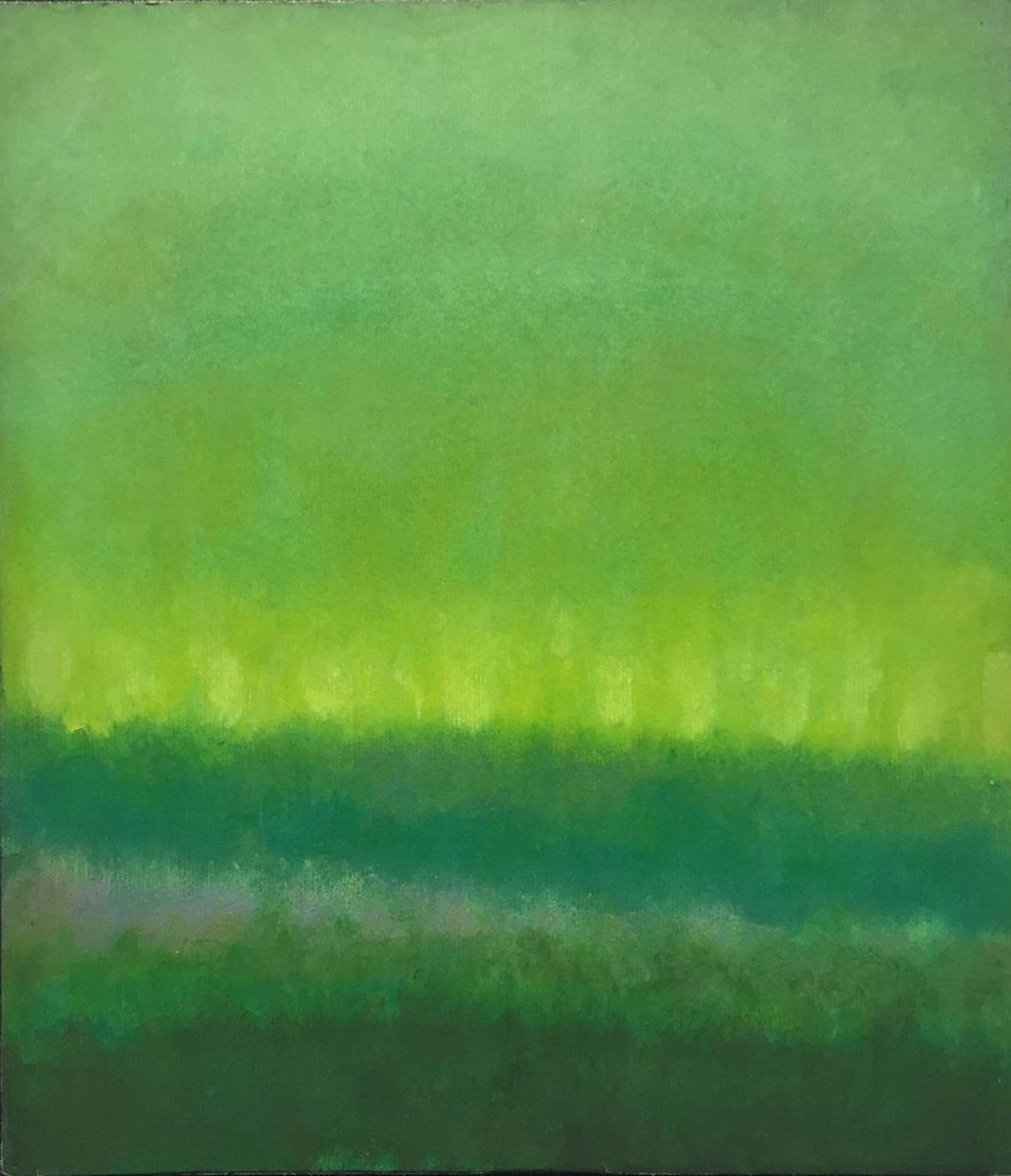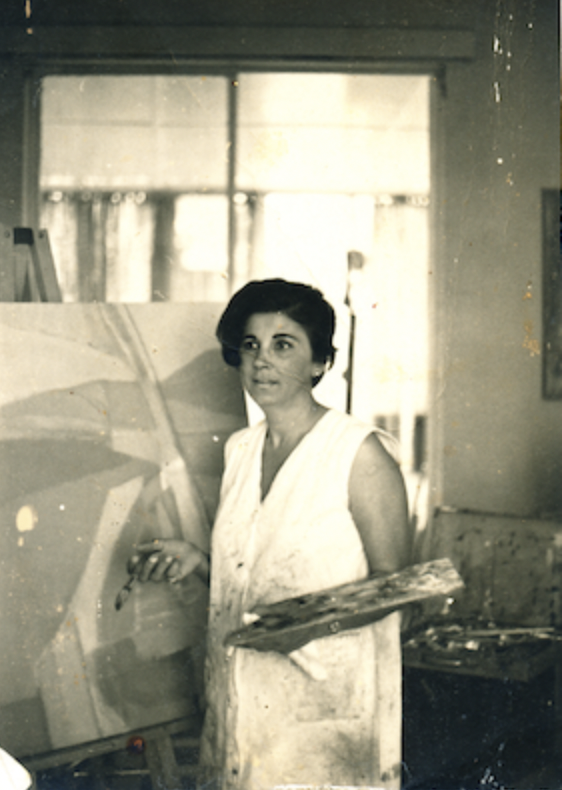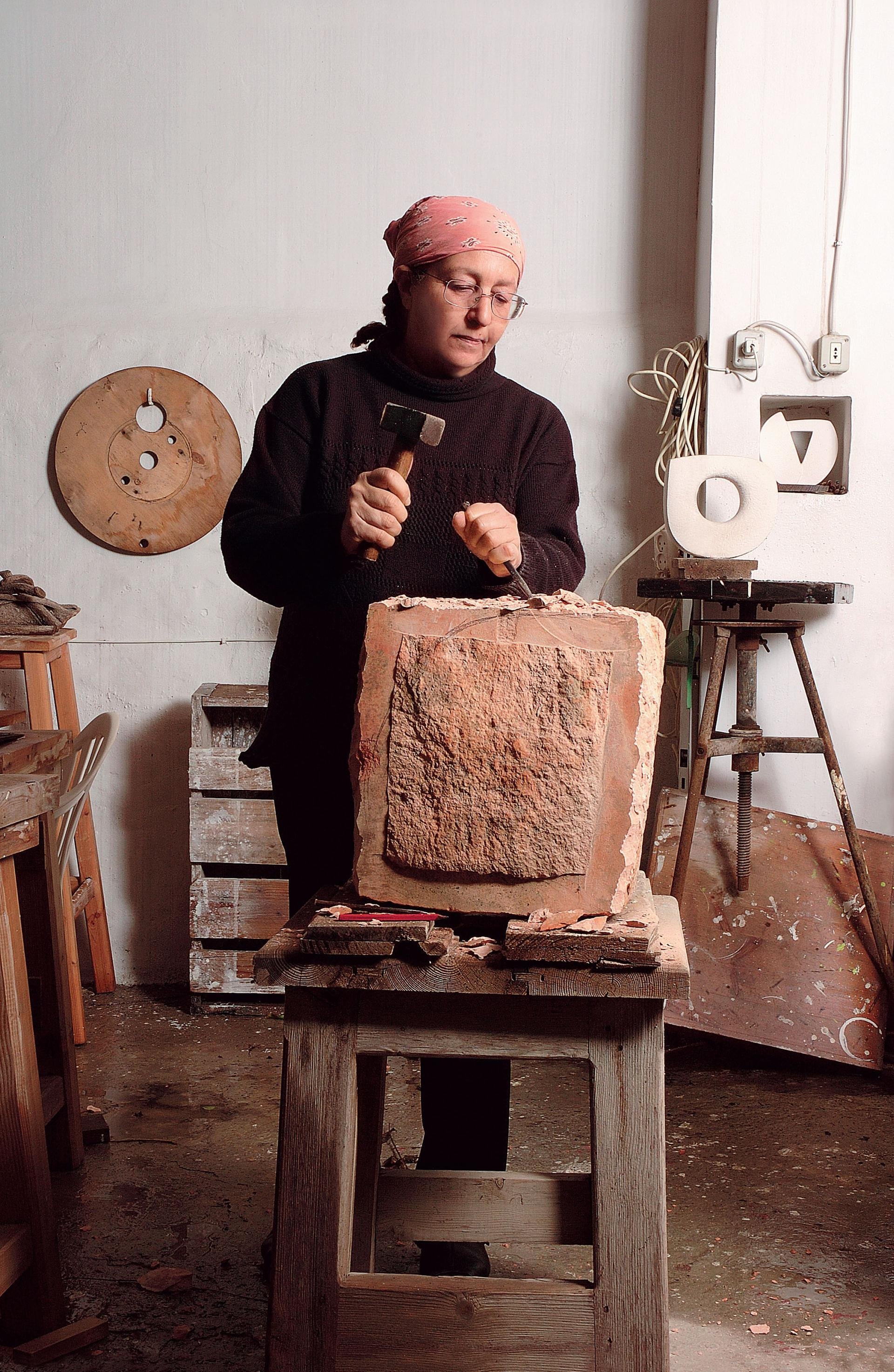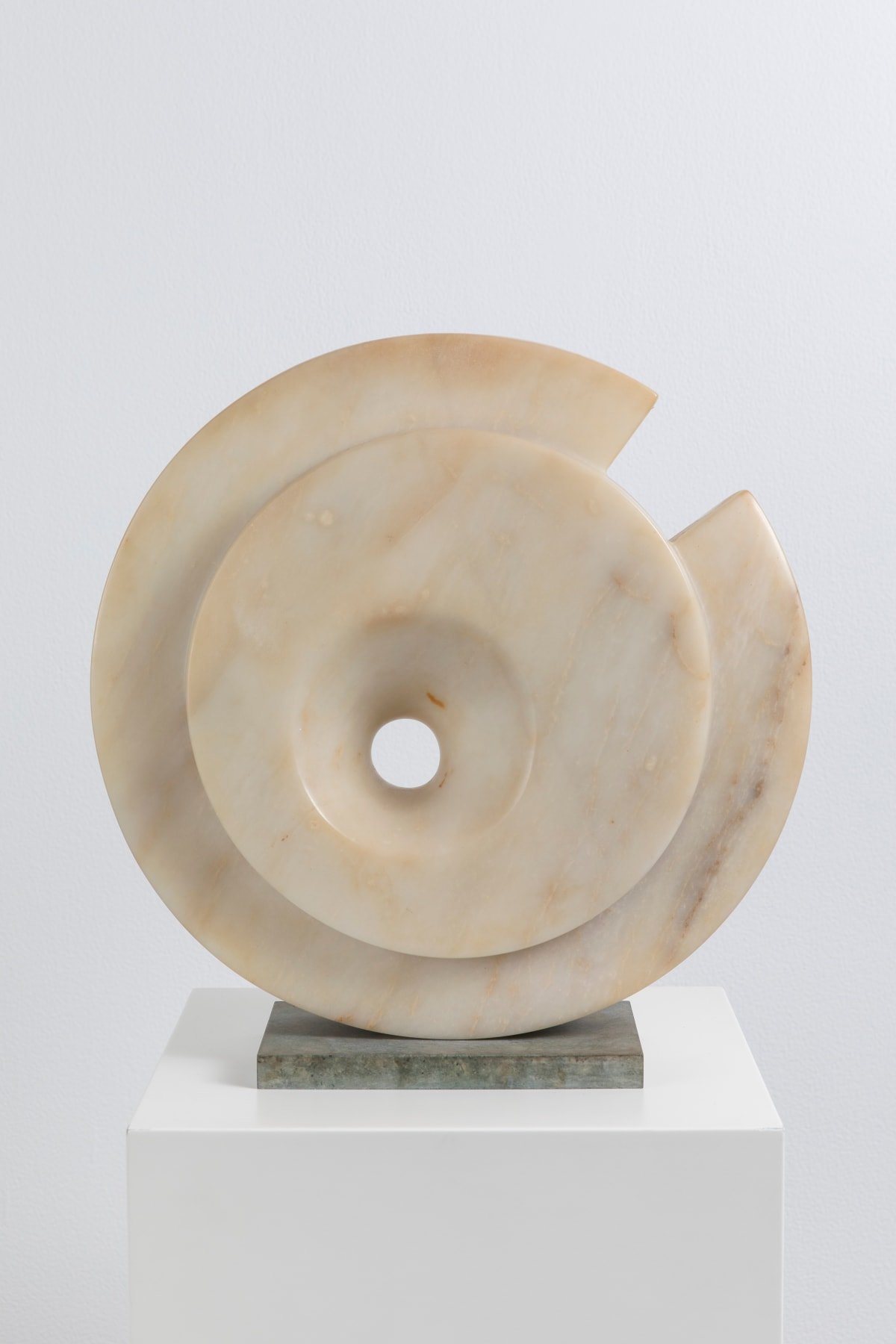Four Women Artists from the Arab World
The Arab World’s artistic history and contemporary landscape has been defined by a number of influential figures: many of them women. The Moving Biographies podcast series will include a few episodes titled On Women By Women In Art in collaboration with the IAAW (Institute of Art in the Arab World at the Lebanese American University). These seek to create a space where women working in the arts today can shed light on key figures, linking the past with the present. In this article, we briefly introduce some of the artists that were featured in this series.
On Women By Women In Art is created in collaboration with LAWHA (Lebanon’s Art World at Home and Abroad) and conceived and moderated by IAAW’s director Yasmine Taan.
Dorothy Salhab Kazemi (1942 - 1990)
Dorothy Salhab Kazemi is known as the pioneer of modern art ceramics in Lebanon. Raised between Tripoli and Beirut, she later moved to Denmark to train under Danish ceramicist Gutte Eriksen. After completing her training, she went on to teach at Glasgow University before moving back to Beirut in 1971 and established the first ceramics department in Lebanon.
Her work has been called a “synthesis between the Occident and Islam, a clear proof of the certainty of harmony in the world.”
Yvette Achkar
Yvette Achkar was born in São Paulo, Brazil in 1928. A pioneering artist, she was at the forefront of the Lebanese modern art scene, known for her experimentation with color and what Christie’s calls “a unique language of simplicity in abstraction.”
She studied at the Académie Libanaise des Beaux-Arts (ALBA) where she joined a group of young pioneering artists who strove to liberate themselves from the traditional forms in pursuit of a new form of expression. After graduating. She spent some time time studying in Paris. She then returned to teach at ALBA and at the National Institute of Fine Arts of the Lebanese University from 1966 to 1988.
Helen Khal (1923 - 2009)
Helen Khal was an American-Lebanese artist, critic and writer born in Pennsylvania. She trained at ALBA between 1946 and 1948, and in In 1947 met Yusuf al-Khal, a modernist poet, who soon became her husband. Even after her marriage she ontinued her artistic studies in New York.
Khal’s art was abstract with a distinct use of color. Her first solo exhibition came in 1960 at the Galerie Alecco Saab in Beirut. Beyond her art, she was undeniably at the heart of Beirut’s cultural and artistic scene, making a major contribution by way of establishing the city’s first permanent art gallery in 1936 . Gallery One’s inaugural exhibition featured works by Michel and Alfred Basbous, Nadia Saikali, Yvette Achkar, Hrair Diarbekirian, and Assadour Bezdikian.
After divorcing her husband, Khal began teaching art at the American University of Beirut (AUB) and writing as an art critic for publications such as the Daily Star and Monday Morning. She also wrote a book called The Woman Artist in Lebanon.
Mona Saudi (1945 - 2022)
Mona Saudi was a Jordanian sculptor, known for her abstract stone works. Born in Amman, she studied at the École Nationale Supérieure des Beaux-Arts in Paris and graduated in 1973. Through her use of basic geometric shapes and organic forms and enduring relationship with stone, she created an oeuvre that has been displayed all over the world. Darat al-Funun calls her “an artist of opposites……that [marries] the simplicity and coherence of primitive sculpture with the sleek contemporaneity of abstract design.”
If you haven’t managed to catch an episode of On Women By Women in Art yet, watch now!
****** ABOUT IAAW ******
The Institute of Art in the Arab World (IAAW) at the Lebanese American University is dedicated to the advancement of contemporary and modern artistic production from the Arab world and its diaspora.The mission of the Institute is to promote interdisciplinary research on curatorial practices and artistic production that tackle social, economical and political issues. It aims to develop an archive of artistic activities that redefine the role of art within the Arab world, how it relates or does not relate to modernism as defined by the so-called western cannon, and how it operates within the historical circumstances and political discourses coalescing in and beyond the region in relation to political conflicts, pandemics, the environment, and other global issues.The IAAW also aims at establishing a dialogue between international scholars and the local community of scholars and artists through seminars, lecture series and other activities that trigger discussions at the intersection of art, post-colonial and gender studies in the aftermath of the Arab spring.
****** ABOUT LAWHA ******
LAWHA (Lebanon’s Art World at Home and Abroad: Trajectories of artists and artworks in/from Lebanon since 1943) is a research project hosted by the Orient-Institut Beirut (OIB) of the Max Weber Foundation. LAWHA investigates the forces that have shaped the emergence of a professional field of art in Lebanon within its local, regional and global context. The project has received funding from the European Research Council (ERC) under the European Union’s Horizon 2020 research and innovation programme (Grant agreement No. 850760).
****** MOVING BIOGRAPHY ******
Moving Biography was a summer school organized by LAWHA/OIB, the American University of Beirut and the Global (De)Centre in 2022, generously funded by the Volkswagen Foundation. The summer school brought together different perspectives to question disciplinary assumptions and decenter life writing. These podcasts are an outcome of the summer school.
